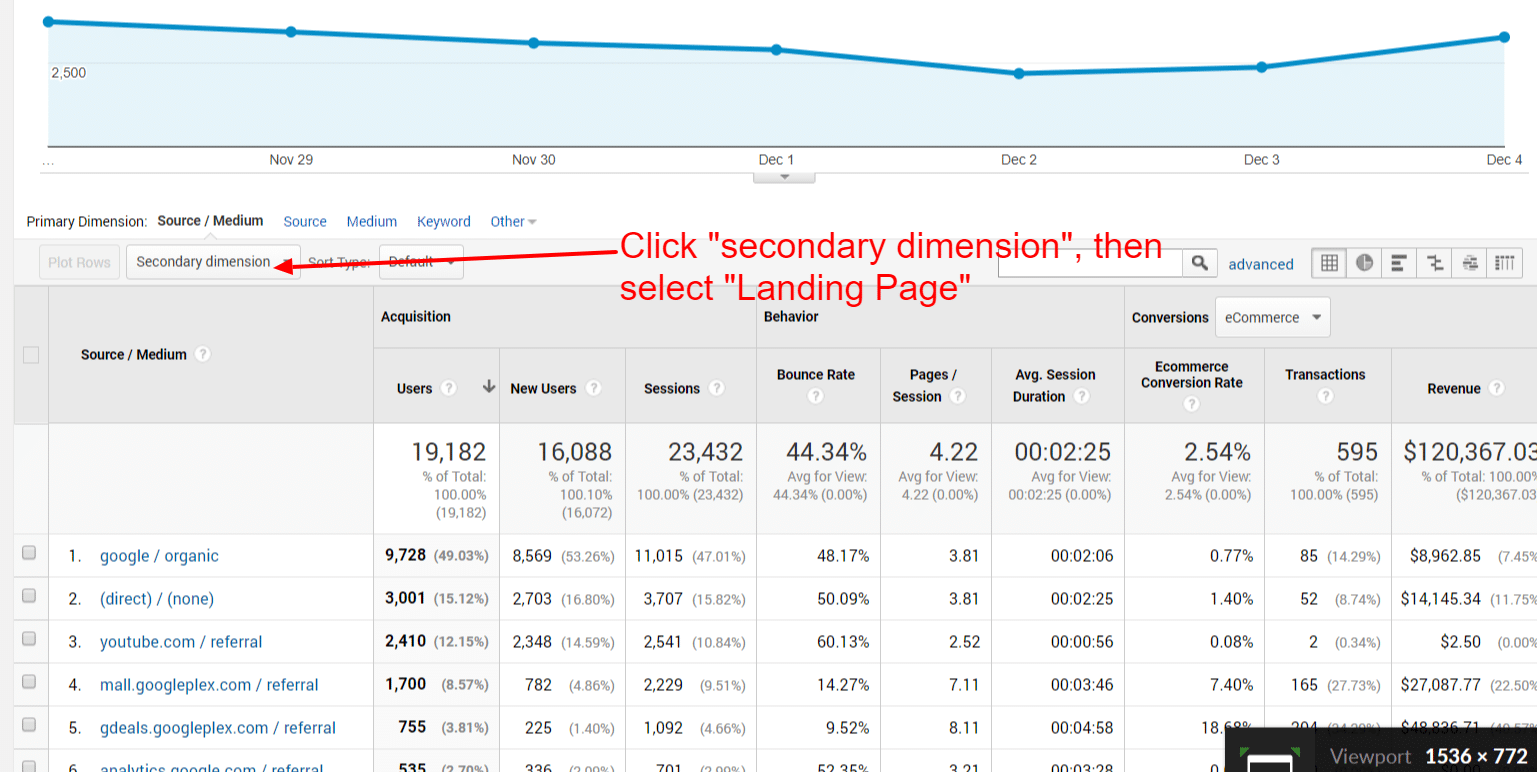Enhance Your Data Analysis Making Use Of Secondary Dimension in Google Analytics
Discovering the abilities of additional dimensions in Google Analytics opens a world of opportunities for refining information evaluation. The capacity to study info additionally past the surface area degree offers a nuanced view that can shape critical decisions. By layering additional dimensions onto primary data collections, an even more intricate story arises, clarifying customer communications and performance indicators. This dynamic method to data examination holds the key to opening hidden patterns and trends that can change how businesses interpret their electronic impact.
Comprehending Additional Dimensions
Second measurements in Google Analytics refer to extra criteria that can be included to the key dimension, allowing for an extra detailed analysis of data (Secondary Dimension in Google Analytics). By incorporating second measurements, experts can sector and filter data to uncover patterns, fads, and relationships that may not be evident when looking at the data as a whole.

Benefits of Making Use Of Secondary Measurements
When assessing information in Google Analytics, the usage of additional dimensions provides important insights into customer behavior and efficiency metrics. By adding an additional measurement to your main data, you can dive deeper into the attributes of your website visitors and their interactions. Among the key advantages of utilizing second measurements is the capability to section and compare data much more properly. This division enables you to recognize just how different variables, such as demographics or website traffic sources, impact individual behavior and conversions (Secondary Dimension in Google Analytics).
Moreover, second measurements help in determining patterns and correlations that might not be promptly evident when considering the data alone. This much deeper degree of analysis can discover beneficial info that can guide advertising and marketing approaches, site optimization, and total business choices. In addition, second dimensions improve the context of your primary information, providing a more extensive sight of individual engagement and performance metrics. On the whole, the usage of second dimensions in Google Analytics can considerably enhance the deepness and quality of your data analysis, causing even more enlightened decision-making and enhanced end results.
Exactly How to Add Second Dimensions
By incorporating second dimensions in Google Analytics, users can obtain much deeper insights right into their data analysis process, enabling for more comprehensive analysis of user behavior and performance metrics. Including second dimensions is a simple procedure that can substantially boost the deepness of evaluation. As soon as in the record, locate the "Second dimension" tab above the data table.
Studying Data With Additional Measurements
Making use of secondary measurements in data evaluation supplies a more thorough understanding of user habits and performance metrics. By including an additional dimension to your primary information set in Google Analytics, you can dig deeper into the qualities of your website site visitors and their interactions. Integrating the primary dimension of 'source/medium' with the second home dimension of 'touchdown page' can expose which certain pages are attracting website traffic from various sources, assisting you optimize these pages for much better engagement.

Essentially, examining data with second measurements encourages you to get useful insights right into customer behavior, recognize fads, and make notified decisions to improve the performance of your electronic homes.
Best Practices for Additional Dimensions
In data evaluation, including additional dimensions efficiently can substantially boost the see deepness of understandings derived from metrics and user behavior patterns. When making use of second dimensions in Google Analytics or any kind of various other analytical device, it is essential to adhere to ideal practices to make sure the accuracy and importance of the data evaluation.
One trick ideal technique is to very carefully pick second dimensions that complement the main dimension being examined. Picking additional measurements that offer extra context or more division can use a more continue reading this comprehensive understanding of the data. It is likewise vital to stay clear of overcomplicating the evaluation by consisting of way too many additional measurements, which might lead to confusion or dilution of insights.
Additionally, it is advisable to try out different mixes of primary and additional dimensions to reveal brand-new correlations and trends. On a regular basis examining and refining the selection of additional measurements based on the particular goals of the analysis can cause even more actionable insights. By complying with these ideal methods, information experts can utilize second measurements effectively to enhance the overall information evaluation process and decision-making capacities.

Final Thought
In final thought, integrating second measurements in Google Analytics is crucial for a comprehensive information analysis approach. By leveraging additional dimensions alongside main ones, analysts and marketing professionals can reveal important insights and correlations that can notify decision-making and maximize electronic advertising methods. Comprehending how to successfully use secondary measurements and following best practices will certainly enable professionals to extract meaningful data and enhance their total efficiency metrics.
Secondary dimensions in Google Analytics refer to extra criteria that can be included to the primary dimension, allowing for an extra in-depth evaluation of information. By integrating secondary measurements, experts can segment and filter data to uncover patterns, fads, and correlations that could not be noticeable when looking at the information as a whole. Integrating the main dimension of 'source/medium' with the secondary measurement of 'landing page' can reveal which specific pages are attracting website traffic from different resources, aiding you maximize these pages for far better engagement.
One key ideal method is to carefully choose second measurements that complement the main measurement being evaluated. By complying with these best methods, information analysts can take advantage of second dimensions effectively to improve the overall data analysis process and decision-making abilities.